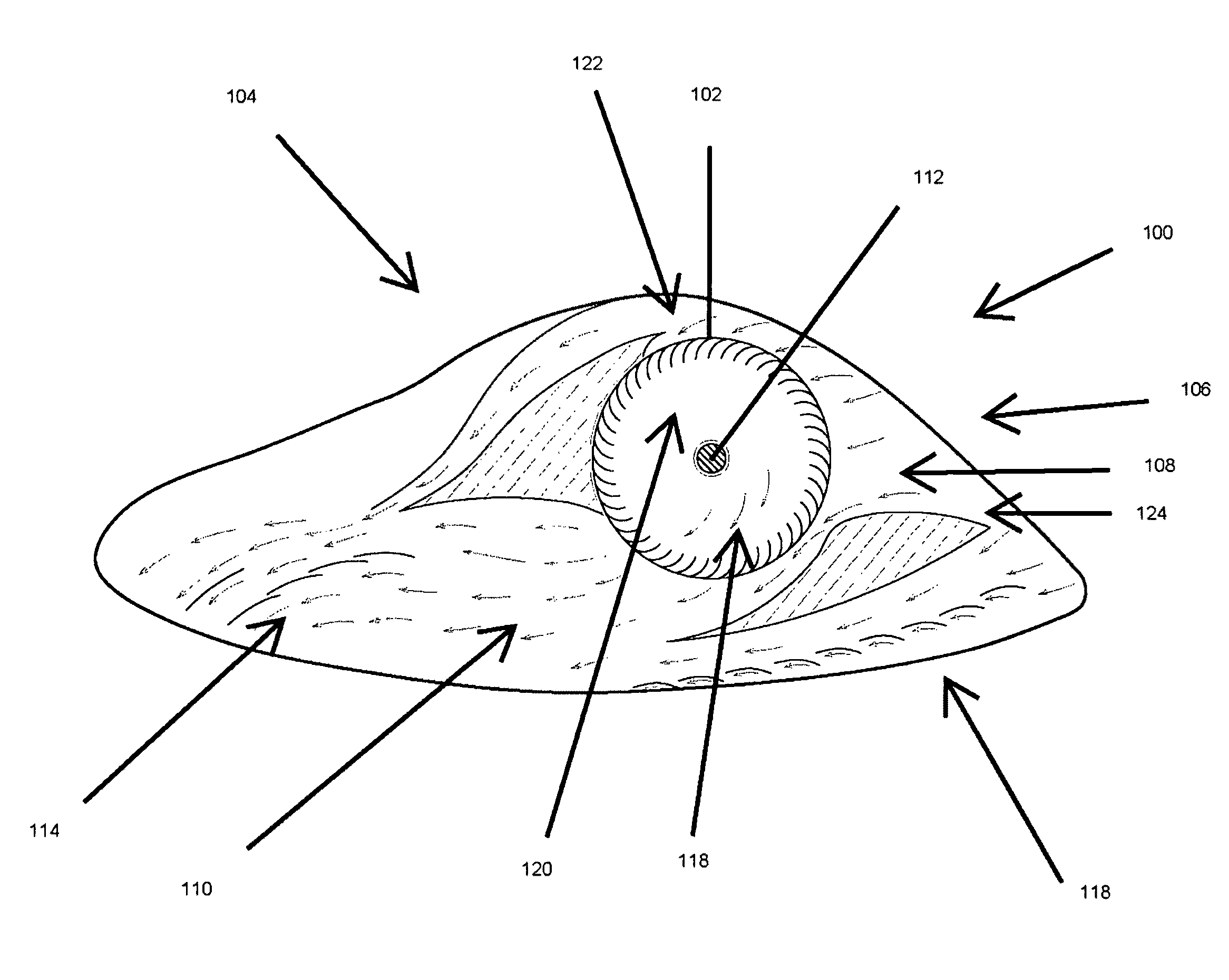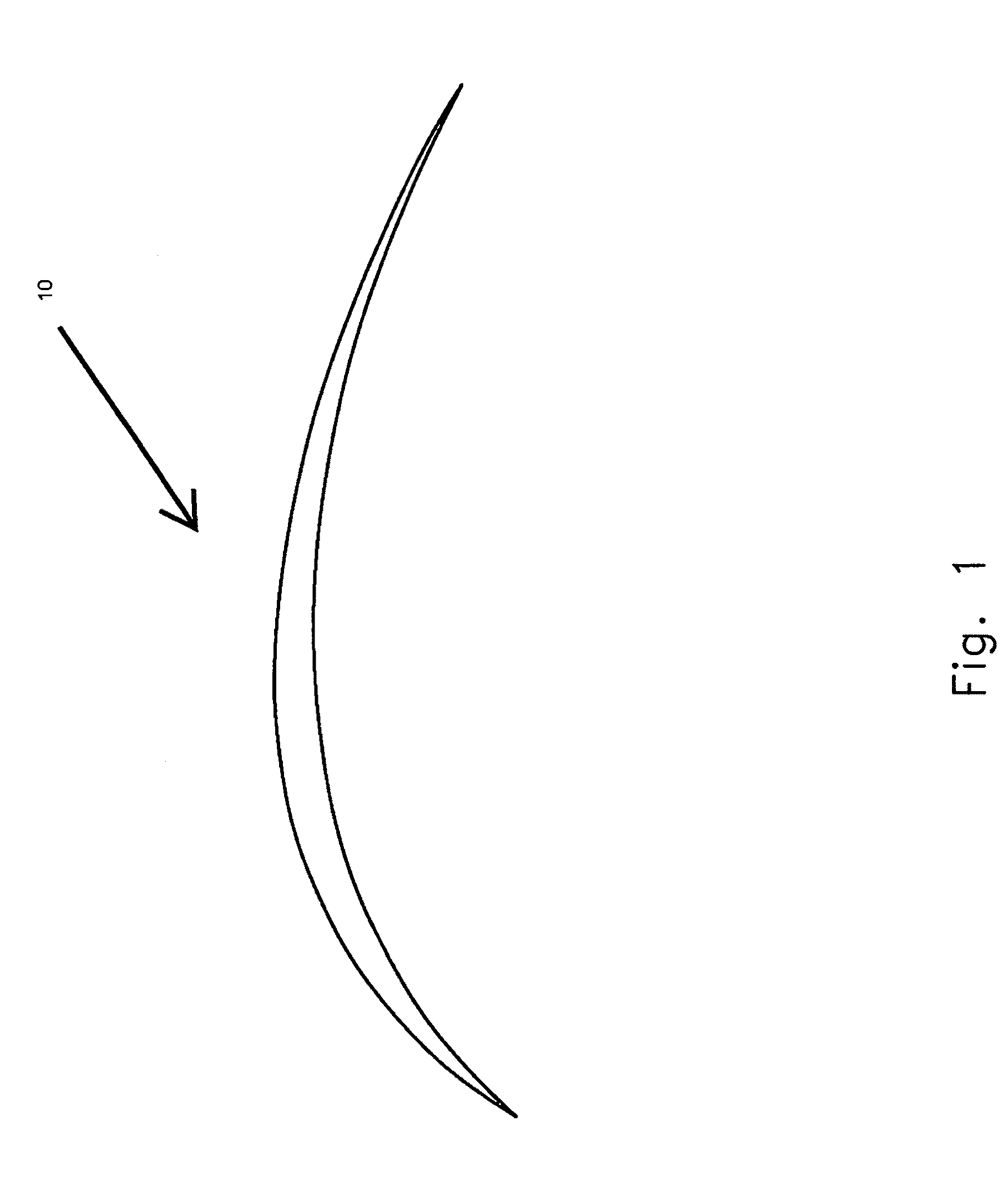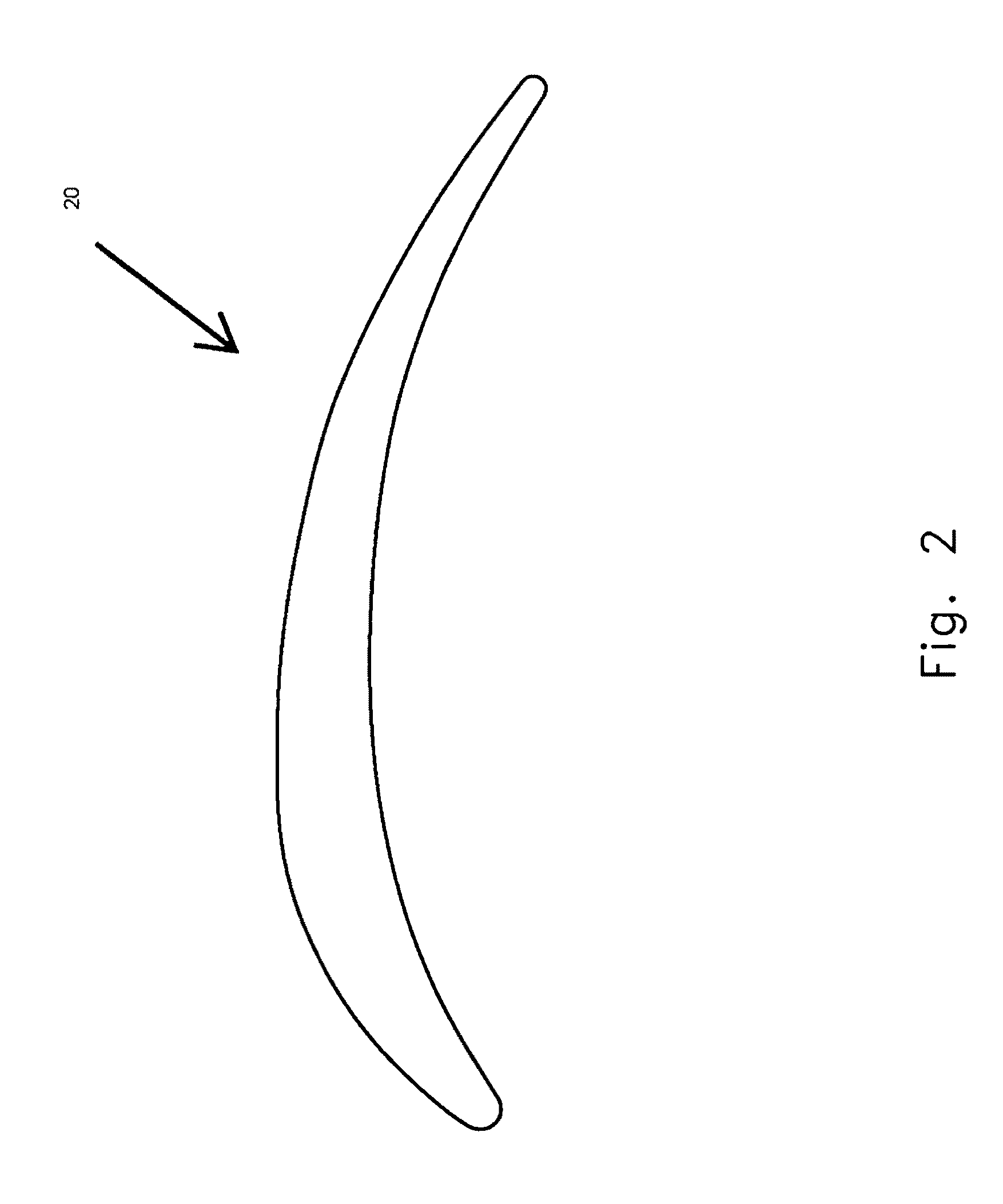Ground-effects type vehicles, such as amphibious air driven technologies and hover craft, as well as vertical take-off and landing vehicles, may have had historically limited development and success due to the previous complexity of traditional aeronautical theory and its potential inaccuracies.
It is with the traditional design of airfoils for aircraft and how the airfoil is traditionally incorporated for flight that commonly known problems associated with traditional aircraft are raised.
One such identified problem is the common misunderstanding of how an airfoil produces lift.
Furthermore, induced drag may be a factor wherein rearward thrust of circulation may be greater than forward thrust.
In respect to this traditional theory, losses in lift may be due in part to upward circulation around the wing ends.
Some studies have found, however, that the airfoil commonly referred to as an accelerating or acceleration airfoil outperforms conventional airfoils by an increase in flow velocities and pressure differentials for lift.
In some circumstances, the additional complexity was to design an aircraft that could generate on its own enough initial lift to allow the aircraft to take off at a non-moving initial position and even to provide some aspects of hovering while in flight or from the take off.
The Harrier Jet technology is relatively expensive and may be difficult to maintain, while another primary deterrent is the apparent lack of precise control desirable for certain applications, such as preferred three-dimensional flight control and low or even no
flight speed control.
In one example, a potential downside is the lack of provision for a stall or loss of power in which the
pilot would have very little option in attempting to land the plane without power to provide thrust and lift for a safe landing.
Furthermore, the Harrier design may not take
advantage of more preferable airfoil designs and configurations that would result in greater lift and thrust, in take off, flight, and landing, particularly as a winged and
jet engine driven aircraft.
Additionally the Harrier Jet design incorporates technology and
resultant thrust effects that may be undesirable with respect to the location of
takeoff and landing of the jet, such as over surfaces that are detrimentally affected by the weight of the aircraft generally and the downward thrust of secondary jet engines to achieve lift.
The technology is relatively expensive, while another primary deterrent is the apparent lack of precise control desirable for certain applications, such as preferred three-dimensional flight control and low or even no
flight speed control.
The problems and deterrents may have been reflected in the number of setbacks the military and developers had in producing serviceable aircraft.
Again, a further potential downside is the lack of provision for a stall or loss of power in which the
pilot would have very little options in attempting to land the plane without power to provide thrust and lift for a safe landing.
Furthermore, the Osprey may not take
advantage of more preferable airfoil designs and configurations that would result in greater lift and thrust, both in take off, in flight, and in landing, particularly as a winged and
propeller driven aircraft.
Craft that have actually been produced in real world application are designs commonly referred to as hover craft and typically lack preferred control over thrust and lift in order to achieve propulsion, much less precise control desirable for certain applications such as preferred three-dimensional flight control and low or even no
flight speed control.
Some of these designs may not
address control over production of thrust in combination with lift in order to propel the vehicle forward or to lift the vehicle from ground surface.
While many of these drawbacks and inadequacies in the prior art are known and documented, no heretofore developed technology has adequately addressed these needs, and the traditional technologies described above do not bridge the gap or fully achieve preferred control over lift and thrust for propulsion, or to do so for standing take off, to hover, and in takeoff, flight, landing and loss of power scenarios for aircraft.
Heretofore generating a controlled combination of thrust and lift for precise and controlled flight and landing in the absence of power supplied to the propulsion
system has not been adequately addressed or achieved in traditional designs.
Furthermore, it may have even been thought as a recognized drawback in aeronautic and ground-effect systems to incorporate the provision for controlled thrust and lift to accommodate not only lift but as also the source for thrust in forward travel or flight.
It may have also been heretofore thought that airfoil design could not be achieved that would provide the necessary lift for real world applications of vehicle dimensions and weight, particularly for any airfoil design beyond traditional single wing aircraft.
In addition to all of the deficiencies previously described, the prior art may suffer from one or more of the following deficiencies.
The prior art may require further and additional thrust and lifting systems and separate and additional power generation for the propulsion
system to achieve a desired result, such as in the take-off and flight of traditional aircraft or in the lack of provision for propulsion in the event of
power loss during flight.
The prior art may not even provide for the combination of control of thrust and lift, such as preferred three-dimensional flight control and low or even no flight speed control, and for the full propulsion of a vehicle such as an aircraft or ground-effects vehicle.
The prior art may even lack the preferred understanding of airfoil design and implementation into a propulsion system, potentially only directed to lift by air flow.
 Login to View More
Login to View More  Login to View More
Login to View More 


